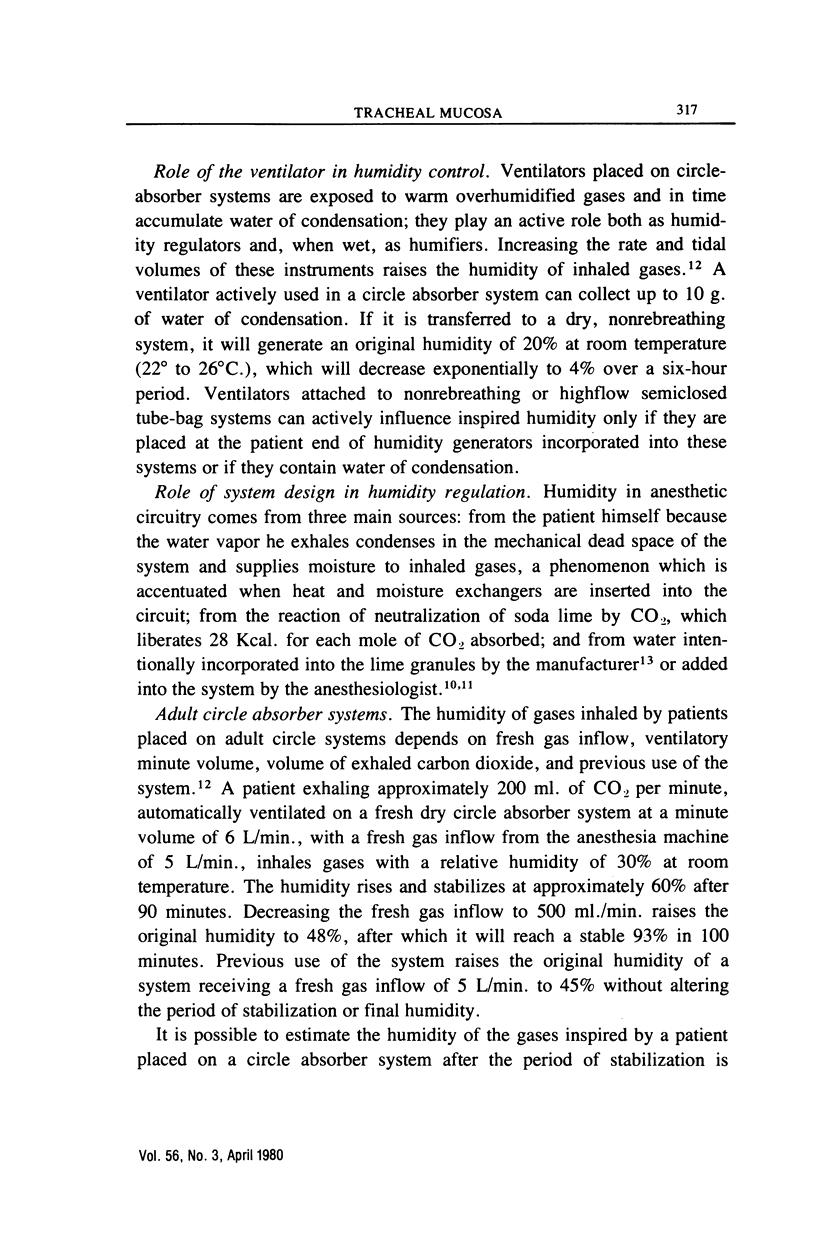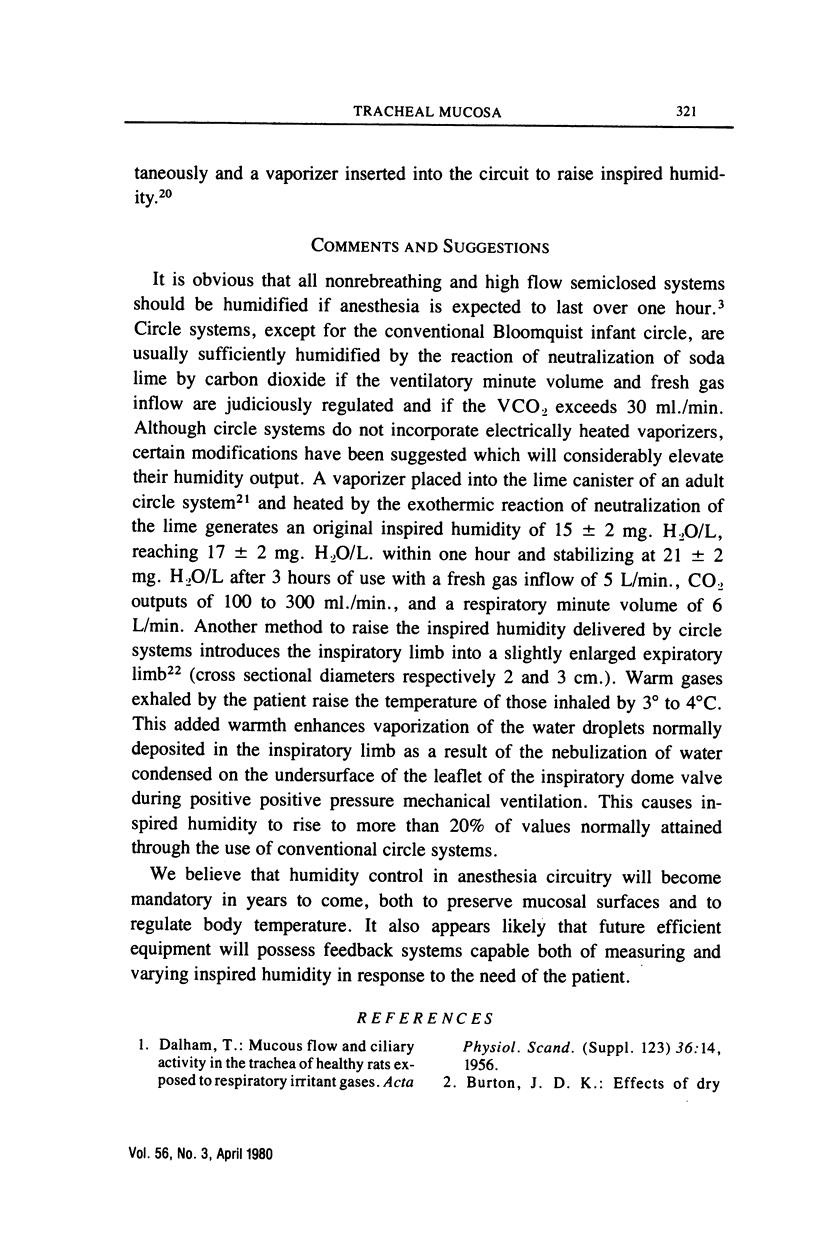Full text
PDF








Selected References
These references are in PubMed. This may not be the complete list of references from this article.
- Berry F. A., Jr, Hughes-Davies D. I. Methods of increasing the humidity and temperature of the inspired gases in the infant circle system. Anesthesiology. 1972 Oct;37(4):456–462. doi: 10.1097/00000542-197210000-00021. [DOI] [PubMed] [Google Scholar]
- Chalon J., Kao Z. L., Dolorico V. N., Atkin D. H. Humidity output of the circle absorber system. Anesthesiology. 1973 May;38(5):458–465. doi: 10.1097/00000542-197305000-00008. [DOI] [PubMed] [Google Scholar]
- Chalon J., Loew D. A., Malebranche J. Effects of dry anesthetic gases on tracheobronchial ciliated epithelium. Anesthesiology. 1972 Sep;37(3):338–343. doi: 10.1097/00000542-197209000-00010. [DOI] [PubMed] [Google Scholar]
- Chalon J., Ramanathan S. Water vaporizer heated by the reaction of neutralization by carbon dioxide. Anesthesiology. 1974 Oct;41(4):400–404. doi: 10.1097/00000542-197410000-00021. [DOI] [PubMed] [Google Scholar]
- Dolorico V. N., Chalon J., Weeks D. B., Orkin L. R. A safe nonrebreathing system: humidity, sterility, cost. Anesth Analg. 1974 Jan-Feb;53(1):75–79. [PubMed] [Google Scholar]
- Déry R. Humidity in anaesthesiology. IV. Determination of the alveolar humidity and temperature in the dog. Can Anaesth Soc J. 1971 Mar;18(2):145–151. doi: 10.1007/BF03025443. [DOI] [PubMed] [Google Scholar]
- Déry R., Pelletier J., Jacques A., Clavet M., Houde J. J. Humidity in anaesthesiology. II. Evolution of heat and moisture in the large carbon dioxide absorbers. Can Anaesth Soc J. 1967 May;14(3):205–219. doi: 10.1007/BF03003721. [DOI] [PubMed] [Google Scholar]
- Déry R. The evolution of heat and moisture in the respiratory tract during anaesthesia with a non-rebreathing system. Can Anaesth Soc J. 1973 May;20(3):296–309. doi: 10.1007/BF03027168. [DOI] [PubMed] [Google Scholar]
- Loew D. A., Klein S. R., Chalon J. Volume-controlled relative humidity using a constant-temperature water vaporizer. Anesthesiology. 1972 Feb;36(2):181–184. doi: 10.1097/00000542-197202000-00024. [DOI] [PubMed] [Google Scholar]
- MacKuanying N., Chalon J. Humidification of anesthetic gases for children. Anesth Analg. 1974 May-Jun;53(3):387–391. [PubMed] [Google Scholar]
- Ramanathan S., Chalon J., Turndorf H. A compact, well-humidified breathing circuit for the circle system. Anesthesiology. 1976 Mar;44(3):238–242. doi: 10.1097/00000542-197603000-00013. [DOI] [PubMed] [Google Scholar]
- Ramanathan S., Chalon J., Turndorf H. Humidity output of the Bloomquist infant circle. Anesthesiology. 1975 Dec;43(6):679–682. doi: 10.1097/00000542-197512000-00017. [DOI] [PubMed] [Google Scholar]
- Rashad K. F., Benson D. W. Role of humidity in prevention of hypothermia in infants and children. Anesth Analg. 1967 Nov-Dec;46(6):712–718. [PubMed] [Google Scholar]
- Tayyab M. A., Ambiavagar M., Chalon J. Water nebulization in a non-rebreathing system during anaesthesia. Can Anaesth Soc J. 1973 Nov;20(6):728–735. doi: 10.1007/BF03025672. [DOI] [PubMed] [Google Scholar]
- Weeks D. B., Broman K. E. A method of quantitating humidity in the anesthesia circuit by temperature control: semiclosed circle. Anesth Analg. 1970 Mar-Apr;49(2):292–296. [PubMed] [Google Scholar]


